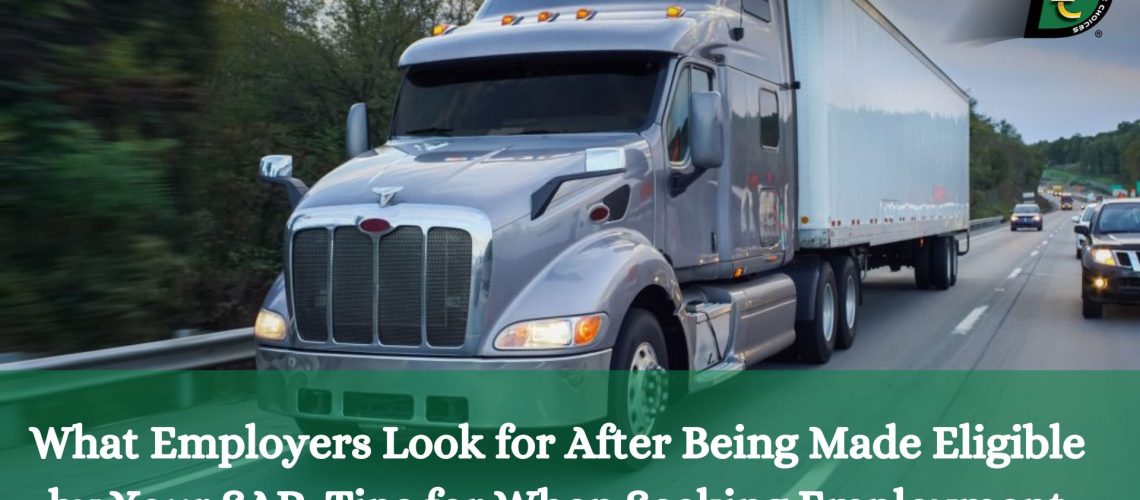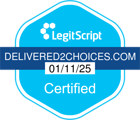Keywords Focused: SAP Return to Duty, CDL drivers, what employers look for after SAP, SAP program employment, tips for getting hired after SAP, DOT compliance
Table of Contents
ToggleIntroduction
If you’ve completed the SAP Step #4 of the Return-to-Duty process, you may be wondering, “What now?” For many CDL drivers, the hardest part comes after regaining eligibility—finding an employer willing to give you a second chance. In this post, we’ll explain what employers expect from you after SAP, offer practical tips to improve your chances, and address common concerns about returning to work in the trucking industry.
Understanding the SAP Portion and Return-to-Duty Process
The Substance Abuse Professional (SAP) portion is a DOT-mandated process for CDL drivers who violated drug and alcohol regulations. They are considered the gatekeepers. After successful SAP evaluation, treatment, and return-to-duty (RTD) test, drivers are marked as eligible to work again. However, this doesn’t guarantee a job — it only means you’ve satisfied DOT’s conditions.
What Does “Eligible to Work” After SAP Mean?
Being eligible after SAP completion means:
- You completed step 4 with your SAP, satisfying all recommendations.
- You passed your return-to-duty drug/alcohol test, step 5.
- You are now cleared under DOT rules to operate a commercial vehicle.
But employers may still have their own policies, insurance, biases about hiring drivers who went through these steps, making it critical to present your skills professionally and prepare mentally with an optimistic outlook.
What Employers Look for After You Complete SAP
a. Proof of SAP Completion
Employers want official documentation showing that you completed the SAP process and are eligible for safety-sensitive work. Ensure you have all necessary paperwork ready to present, the SAP’s initial and follow-up reports.
b. Return-to-Duty Test Results
Although some companies will send you for a RTD test upon hiring, some will ask for evidence of a negative RTD test. This confirms that you completed step 5 and are no longer prohibited from operating a CMV.
c. Commitment to Compliance
Employers want to know that you’re serious about following the rules. Demonstrating knowledge of DOT guidelines, showing honesty about your past violation, and explaining what you’ve learned can go a long way. Some employers are simply not that familiar with the RTD process so you want to refer them to your SAP for specifics.
d. Stable Work History and References
Even after SAP, companies look for drivers with reliable work histories. If your work history is unstable, personal references and a good explanation can help.
e. Clean Follow-Up Testing Record
If you’ve undergone follow-up testing as recommended by SAP and passed all tests, document these results. This shows you’re committed to staying compliant and helps rebuild trust with potential employers. Remember if you change employers before the testing plan is completed, the testing plan moves from employer to employer. You are responsible to inform your next employer to reach out to your previous employer to request the testing plan and all completed follow-up tests, so the new employer can pick up where the previous employer left off.
Tips for CDL Drivers Seeking Employment After SAP
- Prepare a Professional Resume: Highlight your experience, skills, and SAP completion clearly.
- Be Honest but Positive: Address the SAP situation briefly, but focus on what you’ve done to move forward.
- Successfully Completed: Remember you have successfully completed the SAP portion of the RTD process when you receive 4th checkmark in the Clearinghouse.
- Apply to Second-Chance Employers: Some companies specialize in hiring SAP-completed drivers.
- Stay Current on DOT Regulations: Being up-to-date on compliance requirements can impress employers.
- Consider Non-CDL Jobs Temporarily: If struggling to find CDL jobs, working non-CDL roles can keep you employed while you keep searching.
Common Mistakes to Avoid When Searching for a Job Post-SAP
- Hiding the SAP history — employers will find out during background checks.
- Not completing follow-up testing — this shows non-compliance.
- Neglecting to explain what you’ve learned — employers want to hear about your growth.
- Applying to companies that don’t hire SAP drivers — focus on second-chance employers instead or referrals from other drivers.
- Not having proper documentation ready — always carry your SAP completion reports in an email folder ready to forward to a potential employer.
Frequently Asked Questions (FAQs)
1. Can I get a CDL job after completing the SAP program?
Yes, but you need to prove eligibility, commitment to compliance, and readiness to work under DOT rules.
2. How long does a DOT violation stay on my record?
DOT violations are recorded in the FMCSA Clearinghouse for five years from the date of the violation determination or until follow-up testing is complete — whichever is later.
3. Do all employers hire drivers who completed SAP?
No, but some companies specifically work with drivers who have completed the SAP portion of the RTD process.
4. What documents should I provide to a potential employer?
- SAP completion report
- Possibly the completed 5th step in your Clearinghouse
5. What can I do to improve my chances of being hired after SAP?
- Be transparent and proactive in addressing your successful completion of step #4.
- Stay up to date with DOT regulations.
- Utilize your SAP reports effectively and refer them to your SAP to explain the process.
Ready to Get Back on the Road? Let Delivered2Choices Help You!
If you’re struggling to find employment after SAP, you don’t have to face it alone. At Delivered2Choices, we specialize in helping CDL drivers like you become eligible to take the Return-to-Duty test to get back to work.
👉 Contact Delivered2Choices today and take the first step toward getting back behind the wheel!





